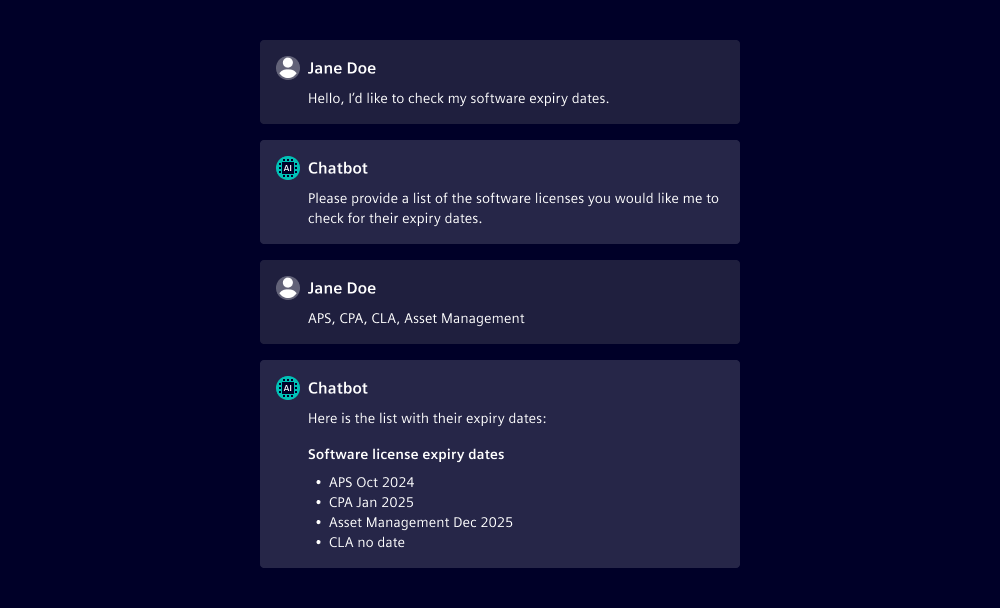Natural language
Overview
Even in industrial contexts, chatbots or virtual assistants have to interact with their users in a human way. They have to understand the language used by users and respond naturally and appropriately for the industrial situation. We want our industrial chatbots to respond as an industrial expert, similar to a colleague they trust, to get our users the information they need.
Natural language benefits
Positive user experience

Here the chatbot is very formal and sounds robotic. It’s not a warm welcome or engaging in any way.

Here the chatbot greeting feels like a real conversation, making the experience more comfortable, engaging and personal.
Engaging interaction

Here the chatbot is trying to funnel the user into a topic, however, the A or B option is unnatural or not something normally found in a natural conversation with a colleague.

When users feel the chatbot is responding naturally, like a person would when trying to assist them with a task, users are much more forgiving if it takes longer to reach their requested goal.
Situational appropriacy

Here the chatbot does not know the user’s specific context or precise information about the working environment, therefore, cannot respond as you would naturally expect from your own industrial chatbot.

When chatbots understand and respond within the user’s context, such as a worker on a factory assembly line, there’s a higher chance they can provide the right answers and respond correctly to user input.
Brand extension

Here the language used is similar to text seen inside a UI (short, precise and concise). It’s a practical response to a user query which reflects the brand extension for the UI-specific context, but conversational design requires more of an empathetic and engaging interaction.

As the language a chatbot uses is an extension of your brand, its voice must reflect and align with your brand. Being conversational and friendly - instead of robotic and cold - helps brand loyalty and creates a positive chatbot experience.
Natural Language Processing (NLP)
Natural Language Processing (NLP) is a field of computer science and a branch of artificial intelligence. It focuses on the interaction between computers and humans and creates models of human language. This helps enable a more natural and human interaction between users and machines. For industrial chatbots, NLP models and software learn from user input to develop and become better at understanding user requests, thus supporting them more efficiently in their daily work.
Benefits of NLP
Understand contextual awareness: NLP chatbots understand user context, allowing them to provide relevant and accurate responses. Interpret user input: NLP chatbots are able to interpret user intent and respond suitably. Provide intuitive interactions: NLP chatbots can better understand and respond to natural language, improving the user experience. Manage deviations: NLP chatbots recognize nuances and variation in user language and adapt to different queries. Offer multilingual support: NLP chatbots understand and answer in multiple languages to support global industries.